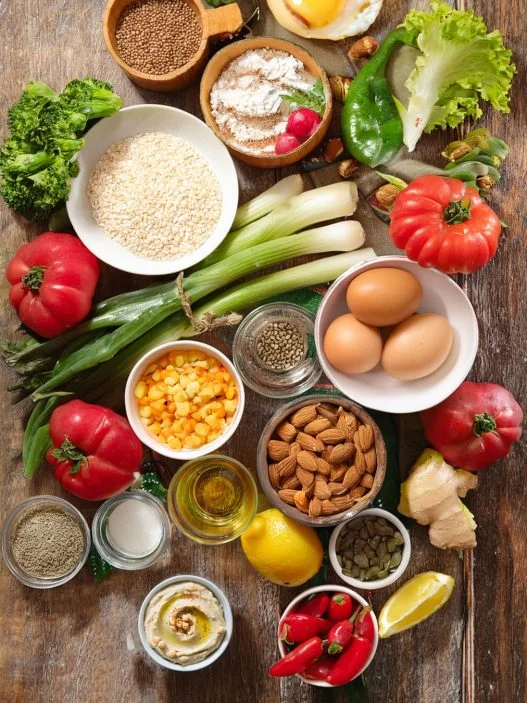Kintsugi stands out in the realm of traditional New York Omakase with its lighthearted atmosphere, along with its focus on globally sourced seasonal ingredients and innovative sake pairings.
In a city of infinite sushi options at your doorstep, why not opt for a non-traditional omakase experience, that is, if you can score one of 10 seats at the SoHo counter. Kintsugi’s distinct style of not using solely Japanese ingredients and alternating its menu to mimic the evolving seasons has drawn seasonal and first-time Omakase goers alike.
And one of the most enticing pieces is the economical price point. With three tiers of premium Omakase, diners can choose from three Omakase experiences that all serve a high quality evening.
- The Kintsugi Omakase, a 16-course service for $195
- The Soho Experience, a 13-course experience for $155
- The Grand Street Classic, a 10-course meal for $95
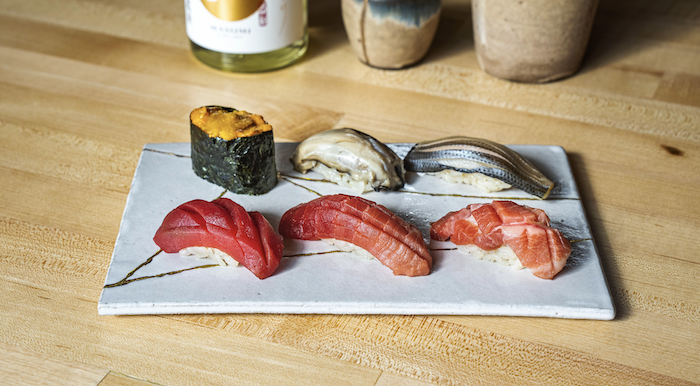
The Chef
The meaning of Omakase lies in the word itself, directly translating to “I leave it up to you” in Japanese. With our trust in the hands of the chef, allowing them to provide a tailored dining experience based on each visitor.
At the helm of Kintsugi is Executive Chef Victor Chen, who brings novel energy to the historically formal encounter. Without compromising on talent or exclusivity, Chef Victor’s lighthearted humor removes the stuffiness of many Omakase places, breaking the wall between chef and diner. From start to finish, it felt like eating in the kitchen of your talented friend’s house.

The Details
The name of the restaurant is inspired by the centuries-old Japanese art of repairing broken ceramics. Rather than rejoining broken pieces with invisible adhesive, the art of kintsugi uses a lacquer dusted with gold pigment. The technique embraces the cracks to give it a glistening second life, often making it more beautiful than the original. Leaning into the literal meaning of Kintsugi, diners are served each course on a handcrafted, gold-fused line of dinnerware made just for the restaurant.
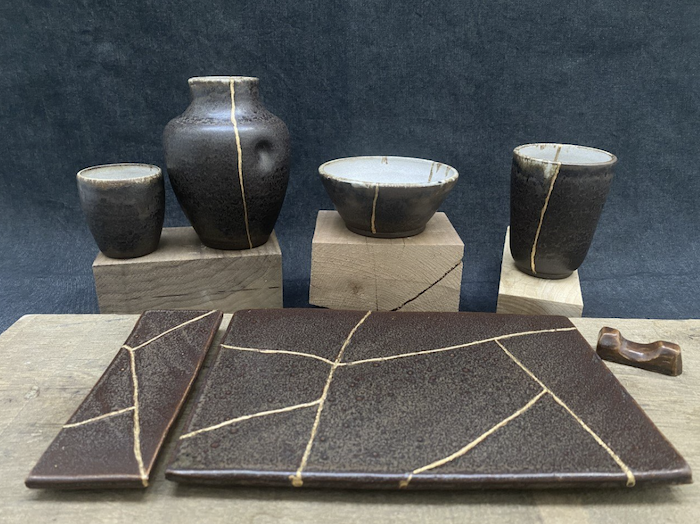
True to its ethos, the team here has created an atmosphere that removes the rigidity felt at most New York City omakase establishments, in exchange for offering a more relaxed and creative feel. The space delivers a soothing experience in an intimate room framed by dark charcoal walls and Japanese wooden slats.
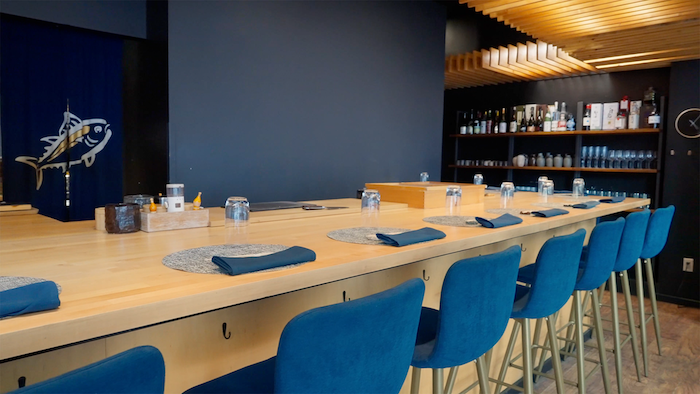
The Dinner
The multi-course experience takes diners on a journey from North Carolina to Greece and Denmark, all in one sitting. Of course, the best part about a 10-seater counter is the front-row view into Chef Victor’s mesmerizing prep.
Kicking things off with an array of imaginative starters, the flavor combinations will surely surprise and captivate even the most seasoned omakase-goer. Unconventional pairings are the name of the game and since we stopped by in autumn, our courses spotlighted a fall-forward palate. Take the Smoked Sawara for instance, a thick-cut Spanish mackerel served alongside a grated Granny Smith apple from North Carolina, which pays homage to “the Big Apple”. The buttery consistency and smokiness of the mackerel complement the citrusy apple. Of course, no omakase is complete without an Ikura, affectionately known as salmon caviar, this rendition comes from roe sacks of salmon straight from Hokkaido, Japan. Another show-stopping appetizer was Chef Victor’s signature Amadei, a tilefish decked with crispy scales, accompanied by baby corn and shishito pepper.
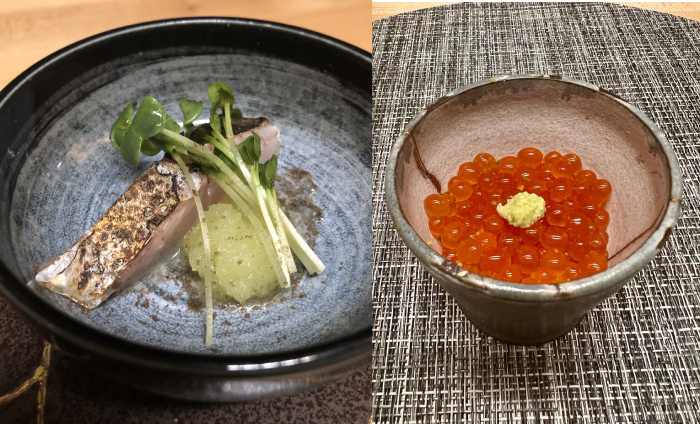
In late fall and winter, you might find nigiri courses featuring a lightly grilled Seabream sourced from Greece, or the Otoro, a tuna sourced from Boston. Each bite is expectedly smoother than the last, with Chef Victor reminding you the best way to eat each course: “eat it all in one bite” or “don’t forget the shiso leaf,” he affectionately expresses, handing you the nigiri in your hand. To wrap up the nigiri adventure, we were treated to uni, a top-tier delicacy that showcases the delectable portions of the spiny sea urchin. Chef Victor’s version was a blend of four lightly smoked uni varieties, served over rice paper.
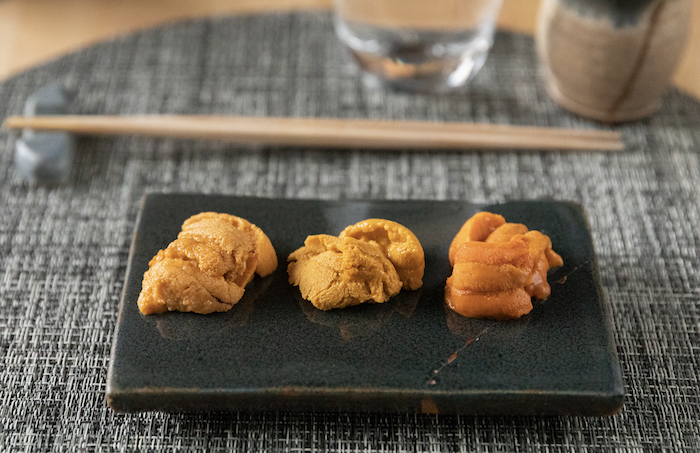
Kintsugi offers a sake program with rotating seasonal selections. Ideal for sake and sushi lovers alike, you can opt for a curated range of sake pairings for each Omakase experience. Or if you’re like me, you can describe your palate to the team at Kintsugi, who are full of thoughtful recommendations. Plenty of rare Japanese spirits, beer, and wine are also on hand at the restaurant.
All tastings conclude with chef’s choice of handroll, gourmet miso soup, tamago, and a rotating seasonal dessert. The Tamago, a sweetened Japanese omelet with a slightly sweet and custardy taste, was a treat. Chef Victor iconically torches the tamago for a crisp, warm finish, resembling that of a crème brûlée. For our final bite, we had a delectable bowl of Hojicha (a Japanese green tea) and Black Sesame ice cream that kept us wanting more.
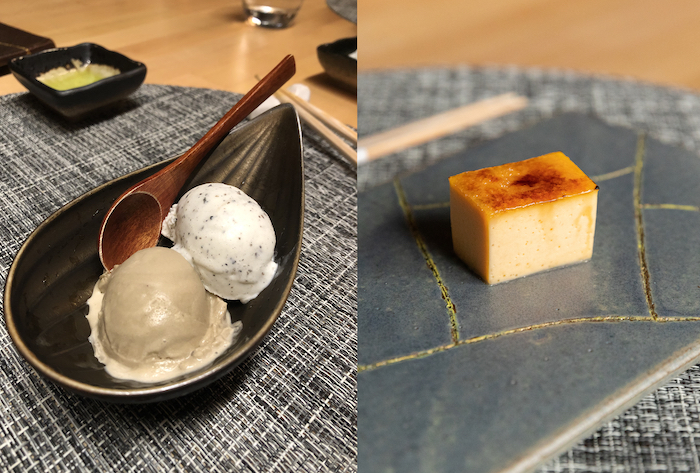
If you’re in the neighborhood, Kintsugi Omakase offers a culinary journey that seamlessly blends artistry and precision to create a one of a kind dining experience that transcends your typical boundaries.
Kintsugi
Website
28 Grand Street New York, NY 10013
Monday-Sunday: 6:00pm–11:00pm
Closed on Wednesdays























